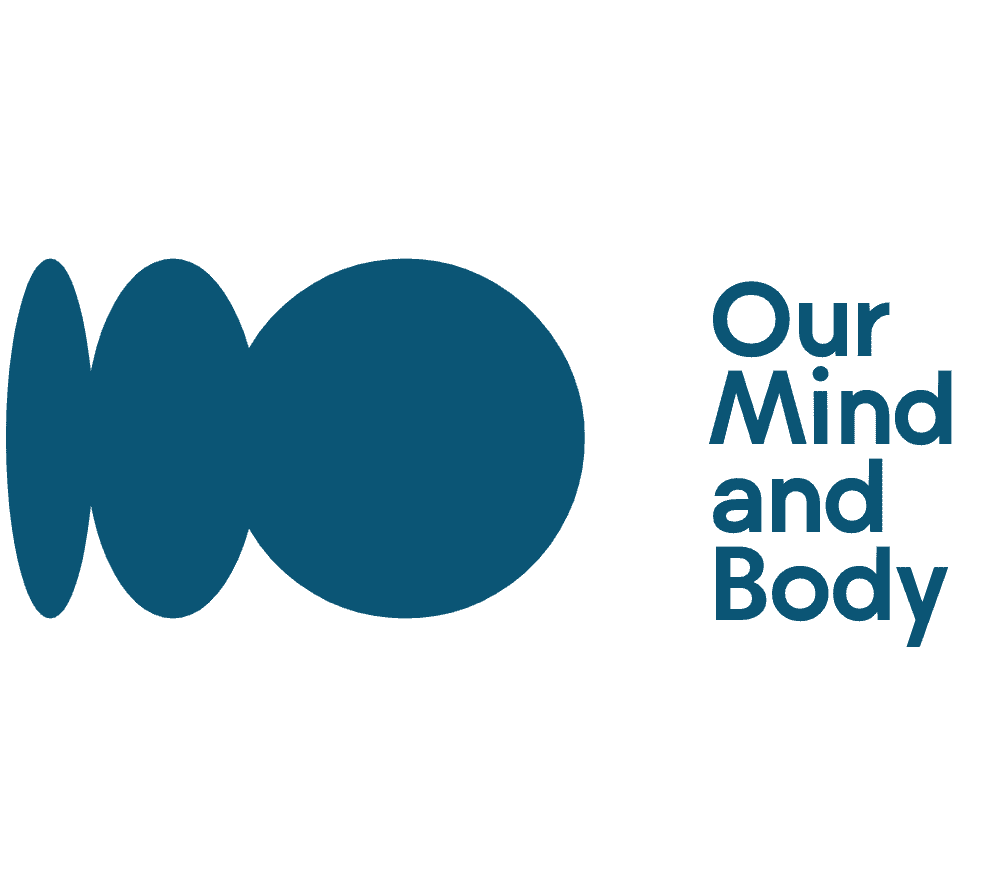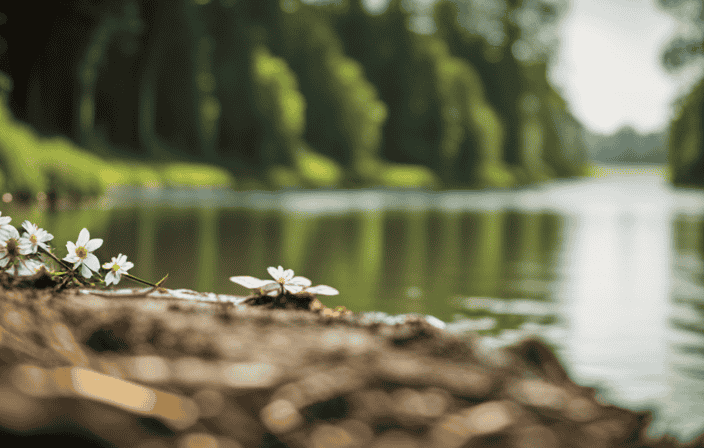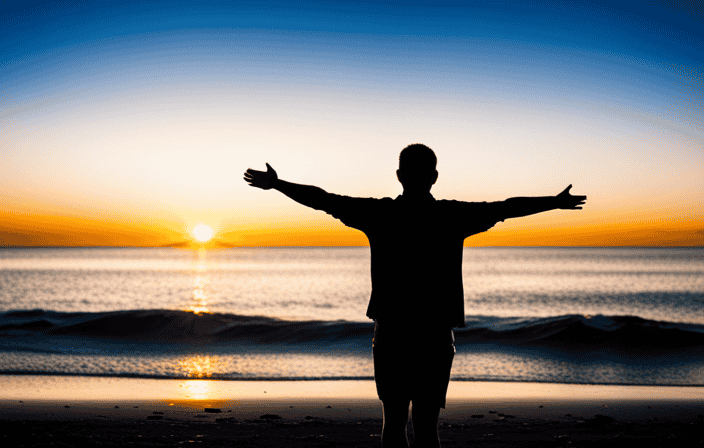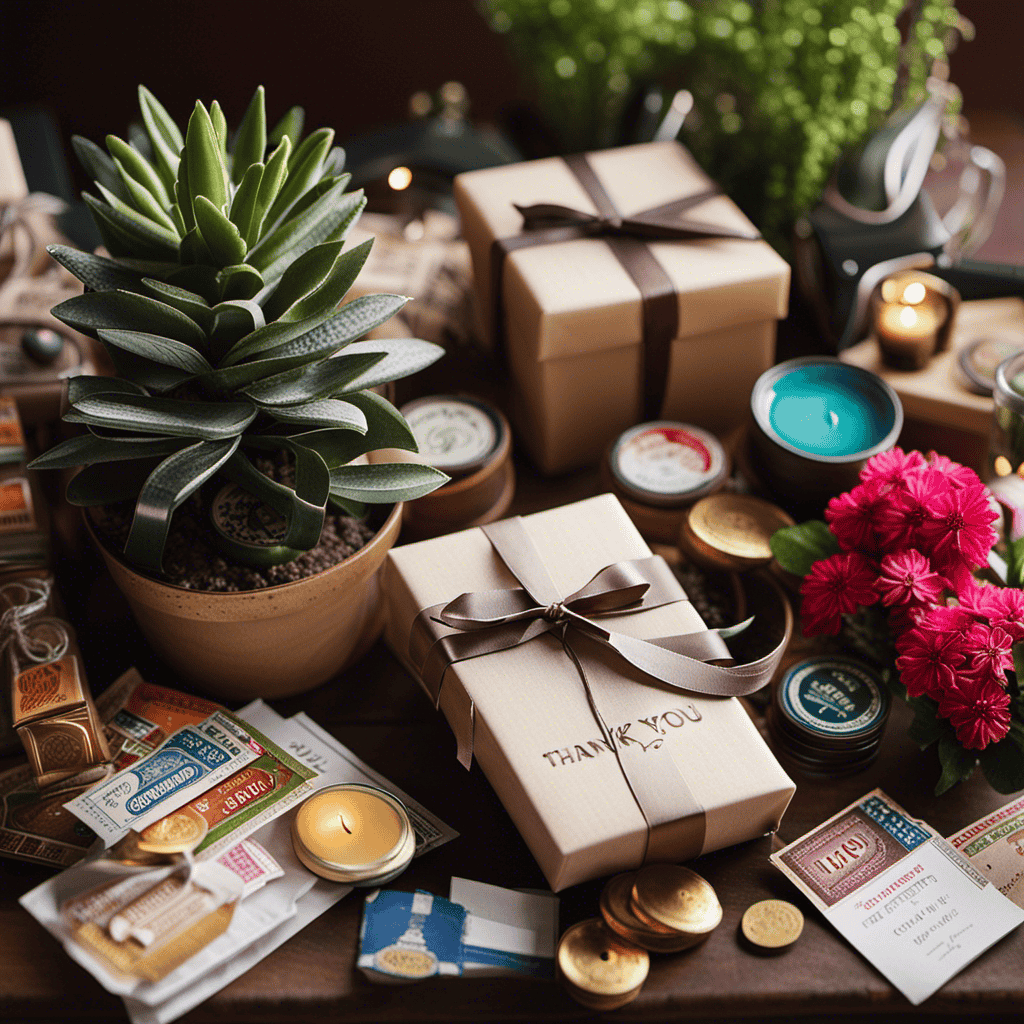Personal Growth
Embracing Vulnerability: The Key to Meaningful Connections and Personal Growth

Understanding vulnerability is crucial. It involves being transparent and authentic with oneself, being open to being seen by others, and having the bravery to share genuine emotions without being afraid of criticism. Defining vulnerability may vary from person to person, but in general, it means exposing oneself emotionally, physically, mentally, and spiritually; taking risks that may lead to pain.
When we think about understanding vulnerability, it’s important to recognize our own feelings before those of other people. This isn’t always easy since so much of what we feel may seem irrational or embarrassing but it’s crucial if we want to make meaningful connections with ourselves and others. We must learn how to be comfortable in our skin and accept all aspects of who we are without judgement or shame.
The meaning of vulnerable goes beyond just feeling emotions; it includes trusting someone enough to take them into account when making decisions as well as learning from mistakes instead of letting them define us. When done authentically and consciously, embracing vulnerability allows us to grow both personally and professionally while creating stronger relationships with ourselves and the world around us.
Recognizing Your Feelings
Vulnerability requires us to take a deeper look at our emotions. When we recognize and identify the feelings that arise, we gain knowledge about ourselves and what drives us. To do this effectively, it’s important to be aware of how you feel in any given moment. This can help you better manage your emotional responses and make conscious decisions about how to express them.
The first step is understanding the difference between primary and secondary emotions. Primary emotions are immediate reactions based on instinct or gut feeling – such as anger, fear, joy or sadness. Secondary emotions are more complex and often come from thinking about something for longer periods of time – like guilt or shame. Once you understand which emotion is driving your behavior, you can work towards processing those feelings in healthier ways.
One way to begin managing your emotions is by exploring why certain triggers create strong emotional reactions within yourself. Recognizing these patterns helps give insight into what needs attention so that they don’t become overwhelming when triggered again. Additionally, learning how to communicate your feelings in an authentic manner allows others to connect with both the message and the person behind it; allowing relationships to grow through mutual understanding rather than confusion or avoidance of difficult conversations.
By taking control over our thoughts and acknowledging our own vulnerability—we open up opportunities for self-growth while gaining valuable insights into who we are as individuals. As uncomfortable as it may seem initially, recognizing our feelings gives us the tools needed to take risks and face fears head on while also making us stronger versions of ourselves along the way.
Taking Risks And Facing Fear
Life is like a roller coaster, with highs and lows that can be exhilarating or terrifying. Taking risks and facing fear are essential to embracing vulnerability and allowing ourselves to grow. We must have the courage to move beyond our comfort zone in order to experience life deeply and authentically.
By taking risks we open ourselves up to new opportunities, experiences, insights and perspectives. Courageous actions involve pushing past our fears so that we may discover what lies on the other side – something amazing! Overcoming our fears allows us to learn more about who we are, as well as developing self-confidence which gives us the strength to believe in ourselves and our capabilities. This leads towards newfound levels of personal growth and self-discovery.
Daring greatly requires bravery but it also opens up a world of possibilities for those who choose to take the plunge. It’s important not to let fear paralyze you; instead, use it as fuel to propel yourself forward into uncharted terrain. Life is full of uncertainty and unknowns – by learning how to embrace them rather than fight against them, you will find an inner strength you never knew existed within yourself. As we transition from this section about taking risks and facing fear into the subsequent one about letting go of perfectionism, remember that there is no greater journey than exploring your own heart and mind through daring greatly!
Letting Go Of Perfectionism
Letting go of perfectionism can be a difficult task, especially if it has been engrained in us for years. It is important to remember that perfection does not exist and that striving for it will only lead to frustration and disappointment. However, by allowing ourselves the freedom to fail without judgement or criticism, we can learn valuable lessons about our capabilities and limitations. By embracing imperfection and understanding our strengths and weaknesses better, we are able to develop self-awareness which will ultimately make us stronger.
Here are three key things you can learn when letting go of perfectionsim:
- Learning how to accept mistakes as part of life’s journey: Mistakes provide valuable learning opportunities when they’re viewed from an optimistic perspective instead of being berated over them. Understanding why we made the mistake allows us to grow both emotionally and intellectually.
- Cultivating resilience: Allowing ourselves time away from seeking perfection gives us space to practice resilience skills such as problem solving, goal setting and positive thinking which help build mental fortitude.
- Developing self-compassion: Letting go of perfectionist tendencies helps foster self-acceptance so that we can show compassion towards ourselves even if we don’t meet our own expectations. This also encourages more realistic outcomes rather than unrealistic ones because failure is no longer seen as disastrous but simply another step on the path to success.
By challenging our beliefs around perfectionism and recognizing its unattainability, we can begin opening up new possibilities beyond this limiting mindset while developing greater emotional intelligence along the way. Through this process, we open ourselves up to growth potentials like never before which then leads into developing self-awareness – a crucial component in personal development work!
Developing Self-Awareness
Tapping into the depths of our inner selves requires a certain level of vulnerability. By allowing ourselves to be vulnerable, we can develop an increased self-awareness that will benefit us in all aspects of life. As with any skill, developing insight through self-reflection and identifying emotional triggers takes practice.
Developing self-awareness starts by getting to know yourself and understanding your limitations. This includes recognizing patterns in our thoughts and feelings, as well as learning how to challenge them when necessary. We must also look at why we feel the way we do and investigate the root causes behind our behaviors. Taking this time for self-reflection helps us understand our emotions on a deeper level, allowing us to better address them when they arise.
By deepening our awareness of who we are, what motivates us, and where our boundaries lie, it’s possible to build healthier relationships with others—connecting on a more meaningful level than ever before.
Connecting With Others On A Deeper Level
When we allow ourselves to be vulnerable, it opens the door for meaningful relationships and authentic connections. By being willing to take risks and share our truth with others, we create an environment of trust and understanding that allows us to build deeper bonds with those around us. Vulnerability helps us break down walls that can often prevent genuine connection.
We learn how to listen more deeply while also communicating in a way that is honest yet respectful. Taking time to think through what we want to say before speaking helps cultivate better communication which leads to stronger relationships. We understand the importance of giving people space when needed as well as offering validation, appreciation and encouragement when appropriate.
The vulnerability process teaches us about boundaries – both ours and those of other people. It enables us to be aware of where these lines are drawn so that interactions remain nonjudgmental and compassionate on all sides. Ultimately, allowing ourselves to be open up creates opportunities for growth and transformation both personally and within our relationships, leading to greater fulfillment in life overall.
Learning To Apologize And Forgive
It is often said that the only way to true growth and healing is by learning how to apologize and forgive. But can this be true? Is it really possible to learn these two skills in order to become a better person? The answer is yes, with practice, you can master both of these important life lessons.
First off, when apologizing for something wrong we have done or said, it’s essential to own up your mistakes without making excuses. Acknowledge what you did wrong and take responsibility for it. Instead of blaming others or externalizing the blame onto anything else, simply admit what happened and apologize sincerely from the bottom of your heart. This will help show humility and create an atmosphere of understanding between all parties involved.
The next step would be forgiving those who have hurt us emotionally or physically. It may seem impossible at first but over time, if we focus on letting go of any anger or resentment towards them through self-reflection, meditation and prayer then eventually peace can prevail within our hearts again. Just remember that forgiveness does not mean condoning someone’s behavior – rather it means showing compassion towards ourselves and allowing ourselves to move forward free from pain so we don’t keep reliving the same trauma over and over again.
By learning how to apologize genuinely as well as forgive deeply, we are able to open new doors in our lives which lead us closer on our journey toward personal growth. With this newfound knowledge comes greater clarity into understanding our strengths and weaknesses while also gaining insight into ways we can improve upon ourselves going forward.
Understanding Your Strengths And Weaknesses
Learning to apologize and forgive is an important first step towards developing self-awareness, but it’s only the beginning. To really understand who you are and how you can grow, one of the most valuable things we can do for ourselves is to recognize our strengths and weaknesses. Understanding your own capabilities allows you to identify opportunities that may present themselves in life as well as obstacles that must be overcome.
One way to begin this journey is by taking a good look at yourself – both positively and negatively – with clear eyes. Start by recognizing what makes you unique: think about the qualities that make up your personality, like creativity or tenacity; evaluate your education level; consider any awards or accomplishments achieved so far; reflect on special skills developed over time; and acknowledge any gifts bestowed upon you from birth. All of these contribute to forming your identity, which will become clearer once they are all named aloud instead of being kept hidden away inside oneself.
Next, assess where improvements could be made within yourself. Identifying areas of growth helps create goals for personal development. Ask yourself questions such as “What would I need to learn in order to improve my professional skill set?” or “How could I raise my emotional intelligence?” The answers should provide insight into potential paths forward when it comes to understanding your strengths and weaknesses fully. Once those have been determined, then take actionable steps towards achieving them without fear of judgement or failure. With each success comes a newfound sense of confidence that builds upon itself until eventually becoming part of who you are – no longer just something learned along the road less traveled.
By allowing ourselves to open up and embrace vulnerability, we gain greater clarity around our strengths and weaknesses while learning more about our true selves in the process. This knowledge gives us the power needed for embracing change throughout our lives – opening ourselves up to new ideas and experiences – making us better equipped for facing whatever tomorrow brings head-on
Being Open To New Ideas And Experiences
Being open to new ideas and experiences can be both challenging and rewarding. It’s a process of learning, growing, and stretching our comfort zones. By allowing ourselves to embrace vulnerability in this way, we gain the opportunity for self-discovery and growth.
| Open-Mindedness | New Experiences | Challenging Concepts |
|---|---|---|
| Accepting Change | Trying New Things | Releasing Fear |
| Learning | Growing | Listening |
| Reflecting | Expanding | Taking Risks |
| Exploring | Adapting | Embracing Vulnerability |
We become more aware of our values, beliefs and what truly matters most to us when we delve into unknown territory with an open mind. This makes it easier to accept change without fear or trepidation. Additionally, trying something new offers unique opportunities that might not have been available if we didn’t take risks or explore unfamiliar areas. With every challenge comes an opportunity for growth so by expanding our knowledge base and adapting to different situations, we’re able to gain greater insight about ourselves and others around us. Finally, embracing vulnerability is vital as it allows us to cultivate meaningful connections through deep listening skills rather than simply reacting on surface level conversations. Through this practice, we develop stronger relationships rooted in understanding and compassion.
Practicing Radical Acceptance
Radical acceptance is a cornerstone of self-growth. It involves accepting ourselves, our circumstances and life as it is in the present moment. When we practice radical acceptance, it gives us an opportunity to learn more about who we are and how to better accept our own flaws, foibles and failures. Practicing this type of acceptance can help us become more confident and secure in ourselves. Here are some things you can learn when you allow yourself to be vulnerable:
- Accepting that imperfection is part of being human
- Allowing yourself to let go of expectations from others
- Recognizing your worth even if things don’t turn out as planned
- Understanding that mistakes happen and learning from them
Acceptance allows us to move on from difficult experiences with new understanding and perspective so we may grow into stronger versions of ourselves. Learning how to love ourselves unconditionally no matter what happens helps us cultivate inner contentment and peace which leads us towards greater confidence in all aspects of life including relationships, career paths and other goals we set for ourselves. By practicing radical acceptance, we gain insight into our needs and wants while becoming open to emotional growth through embracing all situations without judgment or fear. This journey takes courage but ultimately yields profound rewards; helping us find joy within challenging times while gaining newfound appreciation for everything life has to offer.
Becoming More Confident
When we allow ourselves to be vulnerable, it can open us up to a world of new possibilities. We can learn how to become more confident and increase our self-esteem. Becoming confident is an essential part of life that helps us build relationships and achieve success.
Let’s explore three ways in which we can boost our confidence:
| Building Confidence | Boosting Self-Esteem | Developing Self-Confidence |
|---|---|---|
| Focusing on strengths rather than weaknesses | Taking care of your physical health | Embracing failure as a learning opportunity |
| Celebrating small successes | Practicing positive thinking | Being kind to yourself |
| Surrounding yourself with supportive people | Making time for self-care | Setting achievable goals |
By focusing on our strengths instead of dwelling on our weaknesses, we can start building our confidence little by little. Celebrate the small victories you make each day – this will help show you what progress you are making and encourage you to continue striving for bigger wins! Spend time with people who uplift you; those who genuinely want to see you grow and succeed. The encouragement from others will also provide an extra boost in confidence when needed. Lastly, practice positive thinking – don’t let naysayers get in the way of your dreams or prevent you from pushing forward towards achieving them.
Taking care of both your mental and physical health is equally important when looking at boosting self-esteem. Eating healthy meals regularly ensures that your body gets all its necessary nutrients while exercising releases endorphins, which improves moods exponentially. Additionally, taking some ‘me time’ every now and then allows one to relax their mind and soul, resulting in increased energy levels throughout the day!
Developing self-confidence means embracing failures as opportunities for growth instead of viewing them as setbacks or defeats. It involves being kinder to oneself when mistakes are made; acknowledging these errors, understanding why they occurred, reflecting upon them before finally moving past them into actionable solutions that lead toward future successes. Furthermore, setting realistic goals encourages one to focus on short term achievements while envisioning long term objectives — this creates greater purposeful motivation within an individual thus further increasing their level of determination!
By allowing ourselves to be vulnerable, not only do we learn about ourselves but also gain insight into becoming more confident along the journey. With commitment and dedication towards betterment comes great reward – so take pride knowing that there are always chances for personal development no matter where one may find themselves today!
Finding Comfort In Discomfort
Vulnerability can be a scary thing – it means allowing yourself to feel uncomfortable and uncertain. However, in order to grow as an individual, it is important that we learn how to cope with discomfort. We need to find comfort within ourselves, despite the fear of the unknown or feeling exposed. This can often involve taking risks and putting ourselves out there even when our minds are telling us not to.
The key to finding peace amidst discomfort lies in cultivating courage and self-confidence. Being brave enough to take those steps forward while being kind and gentle towards yourself will help you manage any feelings of vulnerability. It’s also helpful to practice mindfulness exercises such as meditation, journaling or deep breathing which can bring calmness into your life.
We all experience moments when we want nothing more than for things to go back to normal but part of learning how to cope with uncertainty is understanding that change is inevitable. Seeking support from family, friends or professionals if needed can make all the difference in helping you come through these difficult times with greater resilience and strength on the other side.
With gratitude comes an appreciation for everything we have been through so far – both the good and bad – enabling us to move forward with newfound wisdom.
Cultivating Gratitude
Who would have thought that finding comfort in discomfort could lead to cultivating gratitude? It turns out that when we allow ourselves to be vulnerable and embrace the uncomfortable, difficult times, it can ultimately unveil a multitude of positive benefits. From creating deeper connections with others, to experiencing more joy and contentment – here are the top 10 things you can learn through embracing vulnerability:
- Cultivate Self-Awareness
- Develop Empathy for Others
- Learn How To Handle Difficult Situations More Effectively
- Live With A Grateful Mindset And Attitude
- Practice Gratitude Journaling For Increased Happiness
- Increase Resilience Through Adversity
- Enhance Your Ability To Connect With People On A Deeper Level
- Get Comfortable Being Uncomfortable In Social Settings
- Discover New Ways Of Thinking That Lead To Personal Growth
- Have The Courage To Face Your Fears Head-On
Through learning how to navigate difficult situations while maintaining an attitude of appreciation, we experience greater levels of resilience than ever before – enabling us to truly appreciate both our successes and failures alike as part of life’s natural journey towards growth and transformation. As we continue on this path of self-discovery, let’s take a moment to cultivate a sense of grateful living by building upon our current foundation of knowledge about resilience and developing new strategies for achieving success no matter what challenges may come our way!
Building Resilience
Vulnerability is the key to developing strong emotional and mental resiliency. Learning how to be vulnerable and embracing the challenges that come with it allows us to build resilience in our lives. To embark on this journey, here are some of the ways we can build our own resilience strategies:
First, practice self-compassion. Self-compassion involves being kind to ourselves when we make mistakes or experience difficult emotions instead of harshly criticizing ourselves for them. By giving yourself grace and understanding, you will learn to accept your imperfections as part of life’s natural process.
Second, cultivate an attitude of gratitude. Practicing gratitude helps us remember the good things in our lives while also allowing us to appreciate all that we have been given. This increases our sense of well-being which is essential for building emotional strength and mental toughness.
Third, focus on taking action rather than getting stuck in rumination or worry about what could go wrong. Taking responsibility for our actions empowers us and encourages healthy habits such as problem solving, planning ahead, setting boundaries, etc., which are important skills for creating meaningful change.
Creating Meaningful Change
Creating meaningful change starts with a commitment to personal growth. As we strive to become better versions of ourselves, allowing ourselves to be vulnerable is essential for our success. By opening up and being honest about the experiences that have shaped us, we can embark on an empowering personal growth journey – one that will help us create lasting, meaningful relationships and overcome limiting beliefs.
When we allow ourselves to experience vulnerability in a safe environment, it can bring healing and transformation as we gain insight into who we are and what really matters most. Being open-minded when it comes to learning new things gives us the opportunity to explore different perspectives and come away with invaluable knowledge that furthers our understanding of life’s complexities. We can also learn how to appreciate the beauty of diversity by actively listening to others’ stories instead of judging or dismissing them.
By embracing vulnerability, we give ourselves permission to take risks, face fears head-on, make mistakes without feeling guilty, accept criticism constructively, and ultimately grow in ways that are both profound and rewarding. Taking part in this process helps us discover more authentic versions of ourselves while giving us the courage needed to make positive changes in our lives and build resilience against future challenges.
Frequently Asked Questions
What Are The Best Practices For Developing Self-Awareness?
Did you know that 9 out of 10 people don’t have self-awareness practices in place? That’s right, developing self-awareness is not only important for our emotional intelligence but also for our mental well-being. So, what are the best practices for becoming more aware? Let’s explore them together!
The first step to developing self-awareness is engaging in reflective activities that help us understand ourselves better. This can include journaling, meditation, or even talking to someone about how we’re feeling and why those feelings were triggered. We can also try to identify patterns in our behavior and emotions by taking an honest look at our past experiences. Doing this kind of inner work gives us insights into who we truly are and helps us recognize any areas where improvement is needed.
Another powerful practice for cultivating greater awareness of ourselves is being mindful of how we interact with others on a day-to-day basis. By paying attention to how our words and actions affect other people, it can be easier to gain insight into our own strengths, weaknesses, values and beliefs – all things that make up the core of who we are as individuals. Lastly, making time for regular self-reflection sessions is key when it comes to learning more about ourselves and growing alongside our evolving needs and desires. Whether it’s a weekly check-in or monthly review session with yourself, setting aside some time each week dedicated solely to reflecting on your life journey so far will surely bring you closer to understanding yourself better than ever before.
Ultimately, building strong self-awareness skills requires commitment from within – but once implemented these habits can drastically improve your emotional intelligence levels and overall mental well-being too! With consistent effort put towards exploring self reflection techniques ,you’ll soon find yourself able to identify triggers quicker; creating healthier relationships with those around you while gaining clarity on your purposeful path ahead!
How Can I Learn To Take Risks Without Feeling Overwhelmed By Fear?
When it comes to taking risks, fear can often be overwhelming and keep us from making progress. But learning how to take risks without feeling overwhelmed by fear is essential for self-growth and developing self-confidence. It’s also an important part of allowing ourselves to be vulnerable, which can lead to great personal development opportunities.
So, how can we learn to take risks without being bogged down in fear? The first step is recognizing that managing our fears is a process rather than a one-time event. If you’re worried about the outcome of taking a risk or feel uncomfortable with the idea of putting yourself out there, try breaking your goal into smaller steps so that each task feels more manageable. This way, you’ll still have control over the situation while slowly building up your confidence in taking bigger risks. You may even find that this approach helps increase your sense of self-worth along the way!
Another key element in overcoming fear is understanding where it comes from and why it might be holding you back. Take some time to reflect on what makes you scared – whether it’s past experiences or something else entirely – then work towards finding ways to address those issues head-on. For example, if you realize that deep down you’re afraid of succeeding because success means change, work towards embracing change as an opportunity for growth instead of running away from it. By doing this kind of inner reflection and actively working through any negative emotions associated with risk-taking, you will become better equipped at tackling difficult situations with courage and confidence when they arise in the future.
Learning how to take risks is an incredibly valuable skill set not only for achieving our own goals but for inspiring others around us too. Taking charge of our fears allows us to push ourselves beyond our perceived limits and create meaningful connections with people who share similar values and ambitions as ours. So don’t let fear stand in the way; embrace vulnerability and make the most out of every opportunity life has to offer!
How Do I Know When It’s Time To Let Go Of Perfectionism?
Letting go of perfectionism can be tough. It’s normal to want things to go perfectly, but when it becomes a way of life that takes away from your ability to learn and grow freely, it’s time to reassess how you’re approaching the situation. Knowing when it’s time to let go of perfectionism is key in allowing yourself to take risks without feeling overwhelmed by fear.
We all have an inner critic telling us we should strive for perfect results every single time. This voice of fear prevents us from taking chances and stepping out of our comfort zone. Whether you’re trying something new or making changes in your life, being able to recognize this urge as unhealthy and not indicative of reality is essential for coping with perfectionism and overcoming its stranglehold on our lives.
Taking a step back and assessing why you feel the need for perfection can help release some of the pressure off yourself while still striving towards success. Give yourself permission to make mistakes without judgement; look at them instead as opportunities for growth and learning rather than failures that must be avoided at all costs. By understanding what triggers those feelings, recognizing them as they come up, and then letting them pass so you can move forward – these are all ways that will eventually lead you towards reaching whatever goals you set out for yourself.
Whether it’s starting a business, going after a promotion, or simply experimenting with something different – once you start giving yourself permission to make mistakes along the way, the process will become less daunting because there won’t be any expectation other than learning along the journey!
What Are The Benefits Of Practicing Radical Acceptance?
Practicing radical acceptance can be a powerful tool for personal growth. By learning to accept difficult emotions, thoughts, and situations without judgment or resistance we can develop an increased sense of self-compassion and self-love. This form of emotional growth helps us to move through the ups and downs of life with greater ease and grace.
Radical acceptance encourages us to take ownership of our own experience by allowing ourselves to feel whatever it is that we are feeling rather than fighting against it. In doing so, we open up possibilities for deeper understanding into our inner world. We may come to recognize patterns in how we respond to certain events or relationships, as well as gain insight into why these patterns exist in the first place. As we become more aware of how our thoughts and feelings interact with each other, we create space for true transformation on a much deeper level than before.
By taking this journey towards radical acceptance, we begin to break free from the bonds of perfectionism which often prevent us from reaching our full potential. Instead of trying to control every aspect of our lives, we learn to embrace uncertainty with courage and trust that no matter what happens, everything will work out in its own time. Ultimately, this practice allows us to make peace with ourselves and live authentically – knowing that there is immense beauty in both vulnerability and imperfection.
How Can I Be More Confident And Comfortable With Vulnerability?
Do you ever feel like the world is a bit too much to handle? Do you often find yourself wishing that there was a way to increase your self-confidence and make vulnerability easier? Well, if this sounds like something you want, then I’m here to tell you that it’s possible! With the right mindset and some hard work, anyone can learn how to be more comfortable with vulnerability.
The first step in building up confidence and taking on vulnerability head-on is learning to trust yourself. It’s important to remember that life isn’t always easy but when we take time for ourselves and focus on our own needs, we’re able to build strong self-esteem and develop an inner strength that will carry us through anything. Additionally, embracing vulnerability means facing all of our fears without being afraid of failure or judgement. We have to believe in ourselves before anyone else does.
Finally, once you’ve built up your self-trust and are ready to dive into vulnerable situations, start by focusing on the positive benefits of doing so: improved communication skills, increased resilience, and feeling empowered by having control over your emotions. These are just a few of the many great things that come from allowing yourself to be vulnerable while also developing stronger relationships with others as well as creating a better relationship with yourself. At its core, engaging in radical acceptance is about loving who you are no matter what comes your way – something which can lead to greater happiness overall.
So don’t be afraid! Vulnerability doesn’t have to be scary; instead it should be seen as an opportunity for personal growth and development – one where self-esteem rises as fear dissipates. Taking small steps towards courageously embracing vulnerability can help build confidence while at the same time teaching valuable lessons about trusting oneself along the way.
Conclusion
The journey of self-growth and development is an ongoing process that requires us to take risks, get out of our comfort zone, and be vulnerable. Allowing ourselves to be vulnerable can teach us a lot about ourselves and how we interact with the world around us. We learn valuable lessons such as learning how to accept ourselves in all our imperfections, understanding when it’s time to let go of perfectionism, taking healthy risks without fear overwhelming us, practicing radical acceptance in order to foster greater confidence, and developing self-awareness through careful reflection on our experiences.
Vulnerability isn’t easy but if you approach it from a place of curiosity rather than fear then you can develop an openness towards yourself and the world around you. With each new step forward there are opportunities for growth and expansion which ultimately leads towards personal transformation. Taking this path allows us to have more meaningful connections with others while also deepening our own sense of inner peace and contentment.
So make sure to give yourself permission to feel vulnerable every now and again; it may just lead you down a beautiful path of discovery! Take things one day at a time and enjoy your journey as it unfolds before you – who knows where it might take you?
Meet Nadi, the soulful writer and explorer of inner realms who graces OurMindAndBody.com with her profound insights and heartfelt wisdom. With a profound passion for mindfulness, meditation, and spiritual growth, Nadi weaves words that touch the hearts and minds of readers, leaving a lasting impact on their well-being journey.
Rooted in a background of philosophy and psychology, Nadi’s curiosity about the human mind and the mysteries of the soul led her on a transformative path of self-discovery. Drawn to the transformative power of mindfulness and meditation, she embarked on a quest to understand the intricacies of these practices, not only for her own growth but also to inspire others to embark on their own inner journeys.
Personal Growth
The Spiritual Significance Of Shooting Stars: Meaning And Symbolism

Have you ever gazed up at the night sky and witnessed a meteor streaking through the darkness? It’s a moment that mesmerizes us and fills us with wonder and awe.
Shooting stars, both scientifically and spiritually, hold a profound significance. Scientifically, they provide valuable insights into the history and composition of our universe.
But beyond the realm of science, shooting stars carry a deeper, more spiritual meaning. In this article, we will explore the spiritual significance of shooting stars, delving into their symbolism and the profound impact they can have on our lives.
Key Takeaways
- Seeing a shooting star spiritually is believed to bring good luck and positive energy
- Many cultures associate shooting stars with messages from the spiritual realm or the universe
- Shooting stars are often interpreted as a sign of new beginnings or endings
- Symbolic meanings of shooting stars include new ideas, wishes, dreams, and spiritual journeys
What are shooting stars?
I’ve learned that shooting stars are natural phenomena caused by debris from space entering the Earth’s atmosphere, and they burn up, creating a bright streak of light across the sky.
It’s fascinating to think about the mythological origins and cultural beliefs surrounding shooting stars. In many cultures, they are seen as messages from the spiritual realm or the universe. Some believe that seeing a shooting star spiritually brings good luck and positive energy, while others associate them with new beginnings or endings.
The symbolic meanings attached to shooting stars can vary widely, depending on individual perspectives and cultural beliefs. For some, they represent wishes, dreams, and spiritual journeys. Others may see them as signs of transformation, growth, or even bad luck.
Regardless of the interpretation, witnessing a shooting star always leaves a lasting impression, igniting a sense of wonder and awe in those fortunate enough to see one.
Scientific explanation
Astronomers study shooting stars using telescopes and instruments to provide a scientific explanation for the phenomenon. Through the exploration of shooting stars, scientific research on shooting stars has revealed fascinating insights into the celestial world. Here are four key findings:
-
Understanding celestial body movement and composition: By studying shooting stars, scientists gain valuable knowledge about how celestial bodies move and their composition. This research helps piece together the history of our Solar System.
-
Insights into the formation of celestial bodies: Analyzing the fallen meteors from shooting stars allows scientists to determine the age and make-up of the Solar System. This information provides valuable insights into the formation of celestial bodies.
-
Unveiling the evolution of the Solar System: Meteor composition analysis sheds light on the evolution of the Solar System. By studying shooting stars, scientists can understand the presence of certain elements in space and gain a deeper understanding of the Solar System’s evolution.
-
Enhancing appreciation for the phenomenon: Understanding the scientific explanation behind shooting stars enhances our appreciation for this awe-inspiring phenomenon. It allows us to marvel at the beauty of shooting stars while also acknowledging the immense knowledge that scientific research has provided.
Regular occurrence
During meteor showers, I love to search for shooting stars in the night sky. It’s a magical experience that fills me with wonder and awe. To make the most out of these celestial events, it’s important to know the meteor shower dates and the best locations for stargazing. Meteor showers happen regularly throughout the year, with the Perseids meteor shower being one of the most well-known, occurring in August. But there are many other meteor showers that take place annually, each with different levels of activity. To increase your chances of seeing shooting stars, find a location away from city lights for better visibility and choose a spot with an unobstructed view of the sky. By being patient and allowing your eyes to adjust to the darkness, you can fully immerse yourself in the beauty of these shooting stars.
Importance of meteor composition analysis
Analyzing the composition of fallen meteors is crucial for understanding the age and make-up of the Solar System. Meteor shower analysis provides valuable insights into the formation of celestial bodies and the evolution of our Solar System.
By studying the chemical composition of these fallen meteors, scientists can unravel the mysteries of our planetary system. It reveals information about the presence of certain elements in space and helps piece together the story of celestial body formation.
This analysis not only enhances our understanding of the Solar System but also deepens our appreciation for the beauty and complexity of the universe. It is through the study of meteor composition that we gain a glimpse into the vastness and wonder of the cosmos, igniting a sense of inspiration and awe within us.
Tips for observing
To enhance your experience of observing shooting stars during meteor showers, it is helpful to find a location away from city lights for better visibility. The best locations for stargazing are usually in remote areas where light pollution is minimal. Choose a spot with an unobstructed view of the sky to maximize your chances of seeing shooting stars.
It’s also important to be patient and allow your eyes to adjust to the darkness. Additionally, if you’re interested in capturing the beauty of shooting stars through photography, there are a few tips to keep in mind. Use a tripod to keep your camera steady, set a wide aperture to let in more light, and use a long exposure to capture the movement of the shooting stars.
With these tips, you can fully immerse yourself in the awe-inspiring experience of witnessing shooting stars during meteor showers.
Positive spiritual beliefs
Experiencing a shooting star fills me with a sense of positivity and brings a feeling of good luck and possibility. It’s as if the universe is sending a message of encouragement and reminding me of the infinite potential within myself.
When I see a shooting star, I take a moment to reflect and express gratitude for the blessings in my life. I then set positive intentions for the future and visualize my dreams and desires manifesting into reality. This act of manifestation is a powerful spiritual practice that helps me stay focused on my goals and allows me to attract the positive energy needed to achieve them.
It’s a reminder that I have the power to create my own destiny and that the universe is conspiring in my favor. So, the next time you witness a shooting star, take a moment to embrace its positive energy and utilize it as a catalyst for your own personal growth and transformation.
Negative spiritual beliefs
When I witness a shooting star, it fills me with a sense of unease and foreboding, as if it is a sign of impending doom or misfortune. In many cultures, shooting stars are associated with negative meanings and superstitions. Some believe that seeing a shooting star is a symbol of death or a bad omen. These beliefs stem from ancient superstitions and cultural interpretations passed down through generations. The idea of a shooting star representing the end of something or a warning of impending tragedy can be deeply ingrained in our subconscious. This negative symbolism attached to shooting stars serves as a reminder to cherish the present moment and appreciate the blessings in our lives. It encourages us to reflect on our actions and make positive changes to avoid any potential negative outcomes.
| Negative Symbolism | Superstitions about Shooting Stars |
|---|---|
| Death | A sign of impending tragedy |
| Misfortune | Bad luck associated with shooting stars |
| Omen | A warning of negative events |
| Impending doom | A sense of foreboding and unease |
Reflection and gratitude
After witnessing a shooting star spiritually, it is natural to be filled with a sense of wonder and awe. The beauty and fleeting nature of these celestial phenomena leave a lasting impression on our hearts and minds.
As I reflect on the spiritual significance of shooting stars, I am reminded of the importance of gratitude in our lives. Taking a moment to pause and appreciate the magic that unfolds before us can be a powerful spiritual practice. It allows us to connect with the universe and acknowledge the infinite possibilities that exist.
Expressing gratitude for the opportunity to witness such a breathtaking sight opens our hearts and minds to the abundance of blessings that surround us. In these moments of reflection and gratitude, we align ourselves with the positive energy of the universe, inviting more miracles and blessings into our lives.
Cultural interpretations
Cultural interpretations of shooting stars vary widely, with different belief systems attributing various messages and events to their appearance. Throughout history, these celestial phenomena have held immense cultural significance, captivating the imaginations of people from all walks of life.
Here are a few examples of how different cultures have interpreted the spiritual meaning of shooting stars:
-
In ancient Greek mythology, shooting stars were seen as a sign of divine favor or displeasure. They were believed to be the souls of deceased loved ones, guiding and protecting those who witnessed them.
-
Native American tribes viewed shooting stars as communication from the spirit world. They believed that these celestial visitors brought messages from ancestors or spirit guides, offering guidance and wisdom.
-
In Chinese culture, shooting stars are associated with luck and prosperity. It is believed that making a wish upon a shooting star can bring good fortune and help manifest one’s desires.
-
In Hinduism, shooting stars are seen as a symbol of transformation and the cycle of life. They represent the journey of the soul and the potential for spiritual growth and enlightenment.
These cultural interpretations highlight the deep-rooted historical significance of shooting stars and the diverse ways in which they have been understood and revered. They remind us of the interconnectedness of humanity and the universal human desire to find meaning in the natural world.
Symbolic representations
As I delve deeper into the spiritual significance of shooting stars, I can’t help but marvel at the myriad of symbolic representations attached to these celestial wonders.
Beyond cultural interpretations, shooting stars hold a profound connection to astrology and spiritual rituals. They are seen as celestial messengers, carrying messages from the universe to guide us on our spiritual paths.
Many spiritual rituals involve making wishes or setting intentions when a shooting star streaks across the night sky, believing that these desires will manifest into reality. The fleeting nature of shooting stars reminds us to cherish the present moment and seize opportunities for growth and transformation.
They ignite a sense of wonder and awe, inspiring us to pursue our dreams and aspirations. In this vast universe, shooting stars serve as spiritual beacons, reminding us of the infinite possibilities that await us on our journey.
Inspiration and motivation
Experiencing a shooting star ignites a deep sense of inspiration and motivation within me. It reminds me of the infinite possibilities that exist in the universe and the power of our dreams and aspirations. When I gaze upon a shooting star, I am reminded of the importance of finding purpose and pursuing our true passions in life. It serves as a gentle nudge from the universe, encouraging me to take action and follow my heart’s desires. The shooting star represents the fleeting nature of life and the importance of seizing every moment. It reminds me to never give up on my dreams, no matter how big or small they may be. Witnessing a shooting star fills me with a sense of wonder and awe, and it reinforces my belief in the beauty and magic of the world around us.
| Finding Purpose | Pursuing Dreams |
|---|---|
| – Shooting stars remind us of the importance of finding our purpose in life. | – They inspire us to pursue our dreams and aspirations. |
| – They serve as gentle reminders to follow our hearts and do what truly makes us happy. | – Shooting stars symbolize the infinite possibilities that exist in the universe. |
| – The fleeting nature of shooting stars reminds us to seize every moment and make the most of our lives. | – They encourage us to take action and not be afraid to chase after our dreams. |
| – Witnessing a shooting star sparks a sense of motivation and reminds us of the beauty and magic of the world. | – They reinforce our belief that anything is possible if we have the courage to pursue it. |
Magical and enchanting experience
The sight of a shooting star creates a mesmerizing and enchanting moment that captivates my senses. As I gaze at the night sky, a shooting star streaks across the darkness, leaving behind a trail of shimmering light.
In that fleeting instant, I feel a deep sense of connection with the universe, as if the vast expanse of space is reaching out to touch my soul. It is a reminder of the infinite possibilities that exist in the universe and within myself.
The magical nature of shooting stars ignites a spark within me, awakening my spirit and inspiring me to embrace my own journey of self-discovery. In that brief encounter with the shooting star, I am reminded to stay true to my path, to follow my dreams, and to trust in the power of the universe to guide me towards my highest purpose.
Frequently Asked Questions
Are shooting stars actually stars?
No, shooting stars are not actually stars. They are debris from space, such as meteoroids, that enter the Earth’s atmosphere and burn up, creating a bright streak of light across the sky.
Can shooting stars grant wishes?
Shooting stars have captivated human imagination for centuries, with magical folklore suggesting they can grant wishes. While scientific explanations reveal their true nature, the idea of wishes coming true adds a sense of wonder and hope to the experience.
What do shooting stars symbolize in different cultures?
Cultural interpretations of shooting stars vary widely, reflecting the diverse beliefs and historical significance of different cultures. They can symbolize new beginnings, messages from the spiritual realm, hope, and inspiration, among other concepts.
Are there any negative beliefs associated with shooting stars?
Witnessing a shooting star can be a breathtaking experience, but there are some negative beliefs associated with them. Some cultures view shooting stars as omens of death or bad luck, which can have a disheartening effect on those who witness them.
How can witnessing a shooting star impact someone’s spiritual journey?
Witnessing a shooting star can have a profound impact on my spiritual journey. It reminds me of the vastness of the universe and my connection to it. It inspires personal growth, ignites a sense of wonder, and encourages me to pursue my dreams.
Conclusion
As I gaze up at the night sky, witnessing the fleeting beauty of a shooting star, I am reminded of the profound spiritual significance that these celestial wonders hold. They are more than just natural phenomena; they are messengers from the universe, igniting a sense of wonder and hope within our souls.
Like the shooting star that streaks across the darkness, we too have the power to leave a lasting impression and inspire others with our dreams and aspirations. Just as the shooting star lights up the night sky, let us illuminate our own paths and embrace the magic and enchantment of life’s journey.
Say hello to Cypress, the soulful wordsmith behind the insightful articles at OurMindAndBody.com. Cypress is a gifted writer who weaves words with grace and precision, using language as a powerful tool to inspire, heal, and uplift the spirits of readers.
With a background in literature and a passion for personal growth, Cypress brings a unique perspective to the world of well-being and spirituality. Having experienced the transformative effects of meditation and yoga firsthand, Cypress is deeply connected to the essence of these practices and their potential to enrich lives.
Personal Growth
The Spiritual Significance Of The Name James

Did you know that the name James has deep spiritual significance? Coming from Hebrew, meaning ‘supplanter’ or ‘holder of the heel,’ the name James represents persistence, courage, and the skill to overcome obstacles.
Numerologically, it carries a value of 11, symbolizing leadership and spiritual enlightenment. Astrologically aligned with Mars, it embodies courage and assertiveness. The symbolic significance of its letters further reveals optimism, sensitivity, and intuition.
Additionally, James is associated with reliability, loyalty, and leadership, offering protection and guidance in various cultures.
Join me as we explore the profound spiritual meaning of the name James.
Key Takeaways
- The name James has a spiritual meaning of persistence, courage, and overcoming obstacles.
- Numerologically, the name James has a value of 11, indicating leadership qualities and spiritual enlightenment.
- Astrologically, the name James corresponds with the planet Mars, symbolizing courage and assertiveness.
- The letters in the name James, such as J and S, hold symbolic significance, representing optimism, excitement, sensitivity, and intuition.
Origin and Meaning
The origin and meaning of the name James is quite fascinating. It is derived from the Hebrew name Yaakov, which means supplanter or holder of the heel.
In a spiritual context, the name James represents someone who is persistent, courageous, and willing to overcome obstacles.
This name holds great significance in numerology and astrology as well. Numerologically, James has a numerical value of 11, indicating leadership qualities and spiritual enlightenment. Astrologically, the name corresponds with the planet Mars, signifying courage and assertiveness.
The symbolic significance of the letters in James adds depth to its meaning. The J represents optimism and excitement for life, while the S signifies sensitivity and intuition.
Overall, the name James carries a powerful spiritual meaning. It reflects qualities of strength, determination, and the ability to rise above challenges.
Numerological Symbolism
Numerology unveils the captivating power behind the numeric value of my name, as the number 11 ignites a blazing trail of leadership and spiritual enlightenment. This numerical value signifies my innate ability to lead and inspire others, as well as my deep connection to the spiritual realm.
I am driven by a strong sense of purpose and a desire to make a positive impact on the world. The number 11 also represents spiritual enlightenment, indicating that I am constantly seeking higher truths and wisdom.
It is through my leadership qualities and dedication to spiritual growth that I am able to navigate the challenges and obstacles that come my way. Numerology allows me to understand and embrace the profound significance of my name, James, as it illuminates the path of my life journey.
Astrological Associations
Astrologically speaking, Mars represents my courage and assertiveness, providing me with the strength to face challenges head-on. In numerology, the name James corresponds with the numerical value of 11, indicating my leadership qualities and spiritual enlightenment.
This celestial connection allows me to tap into my innate sense of determination and fearlessness. As a result, I am able to navigate through life’s obstacles with unwavering resolve.
The position of each letter in my name holds symbolic significance as well. The J signifies my optimism and excitement for life, while the S represents my sensitivity and intuition. These qualities, combined with the influence of Mars, shape my life journey and contribute to my character.
The name James, with its spiritual meaning of persistence and courage, serves as a constant reminder of my ability to overcome any challenge that comes my way.
Symbolic Significance of Letters
In understanding the symbolic significance of letters in my name, I find that the J represents my optimism and excitement for life, while the S signifies my sensitivity and intuition.
The letter J is associated with the planet Jupiter, which symbolizes expansion and growth. This resonates with my personality as I always strive for personal and spiritual development.
The S, on the other hand, correlates with the moon, representing emotions and intuition. I am highly empathetic and intuitive, often relying on my instincts to guide me in making decisions.
Understanding these symbolic meanings of the letters in my name gives me a deeper insight into my life journey and the qualities that define me. It allows me to embrace and cultivate these qualities, leading to a more fulfilling and purposeful existence.
Biblical References
When exploring the biblical references associated with my name, I feel a deep connection to the stories of James the son of Zebedee and James the son of Alphaeus, as they exemplify the strength and resilience required to navigate life’s challenges.
James the son of Zebedee was one of the twelve apostles chosen by Jesus, and he played a significant role in spreading the teachings of Christianity. He was known for his unwavering faith and commitment, even in the face of persecution and adversity.
James the son of Alphaeus, also known as James the Less, was another disciple of Jesus and was known for his humility and dedication to serving others.
Both Jameses serve as powerful examples of how faith and determination can guide us through difficult times and inspire us to lead lives of purpose and devotion.
Famous Namesakes
One of the most well-known individuals who shares my name is the actor James Franco. He is a versatile and talented actor who has appeared in numerous films and television shows.
-
First, imagine being on the set of a blockbuster film with James Franco. The cameras are rolling, and he effortlessly embodies his character, captivating the audience with his powerful presence and emotional range.
-
Next, picture attending a prestigious awards ceremony alongside James Franco. He gracefully walks the red carpet, exuding confidence and style. As he accepts his well-deserved award, his charismatic smile lights up the room.
-
Finally, envision sitting in a theater, watching a play directed by James Franco. His creative vision and attention to detail shine through, transporting the audience into a world of art and imagination.
These scenarios illustrate the impact and influence that someone with the name James can have in the entertainment industry, showcasing their talent, dedication, and ability to captivate audiences.
Cultural Beliefs and Traditions
Growing up in a close-knit Italian-American community, I vividly remember the annual Feast of Saint James celebration, where families would come together to honor their patron saint with a lively parade, delicious food, and traditional music and dancing. This cultural belief and tradition held a significant spiritual meaning for us, as Saint James was believed to offer protection and guidance. The celebration allowed us to connect with our faith and heritage, and it served as a reminder of the values associated with the name James, such as reliability, loyalty, and leadership.
To paint a picture of the Feast of Saint James, here is a table showcasing some of the elements that made this celebration so special:
| Feast of Saint James Celebration | |
|---|---|
| Lively Parade | Delicious Food |
| Traditional Music | Dancing |
| Community Gathering | Honoring Patron Saint |
This annual event not only brought our community together but also reinforced the spiritual significance of the name James in our lives.
Nicknames and Variations
I’ve always loved the various nicknames and variations of my name, James. It is fascinating to see how this name can be transformed and adapted in different cultures and contexts.
In English-speaking countries, common nicknames for James include Jim, Jimmy, and Jamie. These variations add a sense of familiarity and informality to the name, making it more approachable.
In other cultures, there are different variations of the name James that carry their own unique meanings and connotations. For example, in Spanish, the name Santiago is a common variation of James, which means ‘Saint James.’ This variation emphasizes the spiritual and religious significance of the name.
Overall, the nicknames and variations of the name James showcase the versatility and adaptability of this timeless name.
Frequently Asked Questions
Is there a specific spiritual ritual or ceremony associated with the name James?
There is no specific spiritual ritual or ceremony associated with the name James. The spiritual significance of the name lies in its meaning and symbolism, representing qualities such as persistence, courage, and overcoming obstacles.
Are there any specific gemstones or crystals that are believed to enhance the spiritual energy of the name James?
Oh, the wonders of gemstones and crystals! When it comes to enhancing the spiritual energy of the name James, I’m afraid there isn’t a specific gem associated with it. But fear not, for the power lies within the name itself.
Does the spiritual significance of the name James change depending on the person’s astrological sign?
The spiritual significance of the name James does not change depending on a person’s astrological sign. The name James represents persistence, courage, and overcoming obstacles in a spiritual context, regardless of astrological influences.
Are there any specific prayers or mantras that are often associated with the name James?
There are no specific prayers or mantras exclusively associated with the name James. However, individuals named James can choose to use any prayer or mantra that resonates with their personal beliefs and spiritual practices.
Are there any specific spiritual practices or traditions that individuals with the name James are encouraged to follow?
As an individual with the name James, there are no specific spiritual practices or traditions that I am encouraged to follow. However, the name James symbolizes persistence, courage, and a willingness to overcome obstacles, which can guide my spiritual journey.
Conclusion
In conclusion, the name James holds immense spiritual significance.
Its Hebrew origin, Yaakov, signifies perseverance and the ability to overcome obstacles.
Numerologically, the value of 11 represents leadership and spiritual enlightenment.
Astrologically, Mars symbolizes courage and assertiveness, attributes associated with the name James.
The letters in the name also contribute to its symbolic significance, with J representing optimism and S signifying sensitivity and intuition.
The biblical references and cultural beliefs further enhance the name’s spiritual meaning.
Overall, the name James is a powerful symbol of perseverance, courage, and triumph in the face of challenges, making it truly remarkable.
Say hello to Cypress, the soulful wordsmith behind the insightful articles at OurMindAndBody.com. Cypress is a gifted writer who weaves words with grace and precision, using language as a powerful tool to inspire, heal, and uplift the spirits of readers.
With a background in literature and a passion for personal growth, Cypress brings a unique perspective to the world of well-being and spirituality. Having experienced the transformative effects of meditation and yoga firsthand, Cypress is deeply connected to the essence of these practices and their potential to enrich lives.
Personal Growth
The Spiritual Significance Of Black Candle Jars: Unlocking Symbolism And Personal Transformation
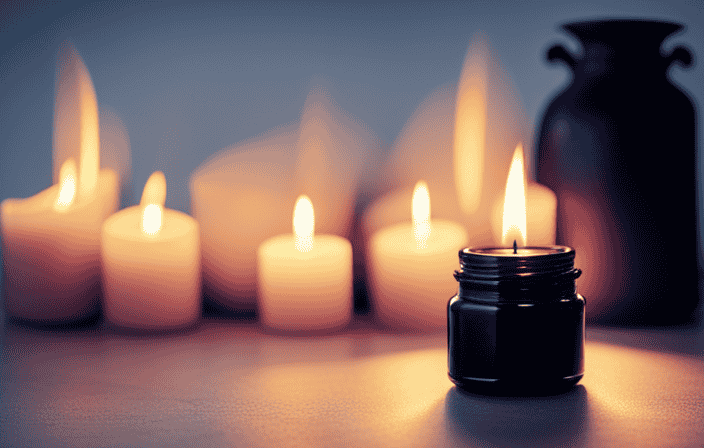
Step into the mystical world of black candle jars, where the soft illumination not only brightens a room but also touches the depths of your soul. These jars serve as a mystical tool, unlocking pathways to change, cleansing, and safeguarding.
They are more than mere objects; they are gateways to personal growth and spiritual connection. As we delve into the symbolism behind black candle jars, we embark on a journey of self-discovery, where shadows are embraced, negativity is released, and transformation becomes our guiding light.
Key Takeaways
- Black candle jars are associated with purification, protection, and banishing negative energy in one’s personal spiritual journey.
- The causes of black candle jars can vary, including the quality of wax, low-quality wick, improper burning techniques, and the impact of candle colors.
- Understanding the spiritual meaning and reasons for candle blackening is important for interpreting the symbolism behind black candle jars.
- Candle colors have specific meanings and associations, and selecting the appropriate color can enhance the desired outcome in spiritual practices.
What is it?
I know that black candle jars have a spiritual significance and can unlock symbolism and promote personal transformation.
Understanding symbolism is like peering into the depths of our souls, searching for hidden truths and untapped potential.
Just as the black candle jar holds the flickering flame, it also holds the power to ignite our inner fire. It symbolizes spiritual purification, a cleansing of the soul, and a release of negative energy.
When we embrace the black candle jar in our rituals, we invite protection and banish the darkness that may cloud our minds.
It is through this act of lighting the black candle jar that we embark on a journey of self-discovery and transformation. As the flame dances and casts its mesmerizing glow, we are reminded of the power within us to illuminate our path and create our own destiny.
Causes and Prevention
Understanding the causes of blackening in candle jars and implementing proper burning techniques can help prevent this issue. Prevention is key when it comes to maintaining the quality of our candles and maximizing their spiritual significance.
Just as in life, we must be mindful of our actions and choices to avoid negative outcomes. By taking the time to select high-quality wax and wicks, we can ensure a clean and pure burning experience. It is essential to pay attention to the fragrance oils we use, as excessive usage can contribute to blackening.
Furthermore, mastering proper burning techniques, such as trimming the wick and allowing the candle to burn evenly, will enhance the longevity of our candles and prevent blackening.
Let us strive to improve the quality of our candles, allowing their vibrant light to illuminate our spiritual journey.
Interpreting Meaning
Exploring the different interpretations of the meaning behind blackened candle jars enhances my understanding of their role in my spiritual journey. As I delve deeper into the symbolism associated with these jars, I uncover new layers of meaning and insight. Each blackened jar represents a transformation, a purification of the soul, and a shield against negativity. It serves as a visual reminder of the power I hold to banish darkness and embrace the light within.
To aid in my exploration, I have created a table that captures the essence of the spiritual growth that can be achieved through the interpretation of black candle jars:
| Symbolism | Spiritual Growth | Interpretation |
|---|---|---|
| Transformation | Embracing change | Letting go of old patterns and beliefs to make space for personal growth and evolution. |
| Purification | Releasing negativity | Cleansing the spirit of negative energy and fostering a sense of inner peace. |
| Protection | Shielding from harm | Creating a spiritual barrier to safeguard against external influences and negative forces. |
By understanding the diverse interpretations of black candle jars, I am able to harness their power and incorporate them into my daily rituals for spiritual growth. They serve as a constant reminder of the transformative journey I am on and the importance of embracing the symbolism they hold.
Candle Colors and Meanings
Selecting the appropriate color of a candle allows for a deeper connection to desired outcomes and enhances the effectiveness of spiritual practices. Candle colors hold significant meanings and can be used to amplify intentions in our daily rituals.
Combining candle colors is like blending different hues on a canvas, creating a masterpiece of energy and intention. Just as an artist combines shades to evoke specific emotions, we can combine candle colors to enhance our intended outcomes.
For example, combining a black candle, symbolizing protection and banishing negativity, with a white candle, symbolizing purity and clarity, can create a powerful synergy in our spiritual journey.
It is through this intentional blending of colors that we find ourselves truly immersed in the transformative power of black candle jars, unlocking their symbolism and experiencing personal transformation.
Impact on Spiritual Journey
Experiencing the impact of black candle jars on my spiritual journey has been profound and transformative.
Exploring the symbolism behind these jars, I have discovered a powerful tool for harnessing transformation in my life. Like the darkness that precedes the dawn, the black candle jars represent the necessary journey into our own shadows and depths.
As the candle burns, it purifies, banishing negative energy and paving the way for personal growth. Just as the black candle jars release their black residue, I too release the negativity and limitations that no longer serve me.
Through this process, I am able to ground myself, finding stability and strength amidst the chaos of life. The black candle jars symbolize the journey of transformation, reminding me that from darkness comes light, and from ashes rises the phoenix.
During my spiritual journey, I have found that incorporating black candle jars has had a profound impact on my growth and transformation. Exploring the symbolism behind these jars has allowed me to delve deeper into my inner world, unlocking hidden aspects of myself and embracing transformation.
The black candle jars serve as powerful tools, symbolizing the journey of purification and protection. They act as a mirror, reflecting the shadows within, urging me to release negativity and embrace the light. As I light the candle and watch the black residue slowly melt away, I am reminded of the power of transformation and the constant shedding of the old to make way for the new.
Embracing the spiritual significance of black candle jars has allowed me to align my beliefs and values, grounding me in my journey towards self-discovery and personal growth. With each candle ritual, I am reminded of the power of intention and the importance of focus.
These black candle jars have become a constant companion, enhancing my spiritual connection and deepening my understanding of myself and the world around me.
Incorporating black candle jars into my daily rituals has deepened my spiritual connection and heightened my understanding of myself and the world around me.
Exploring the symbolism behind these jars has allowed me to embrace personal transformation in a profound way. The black residue left behind after burning a candle represents the release of negativity and the purification of my spirit. It is a reminder that through shadow work and grounding, I am able to banish negative energy and protect myself from its influence.
Each time I light my black candle jar, I am reminded of the transformative power within me and the importance of releasing what no longer serves me. It is a symbol of strength and resilience, guiding me on my spiritual journey towards growth and enlightenment.
By embracing the spiritual significance of black candle jars, I have unlocked a deeper understanding of myself and the world, allowing me to walk the path of personal transformation with intention and purpose.
Using black candle jars in my daily rituals has greatly deepened my connection to the spiritual realm and enhanced my personal growth journey. Exploring the symbolism behind these jars has allowed me to tap into a deeper understanding of myself and the world around me.
Each time I light a black candle, I am reminded of the power of intention and the importance of focus in my spiritual practices. The black residue left behind after burning represents the transformation and purification that takes place within me. It is a visual reminder of the negative energy and emotions that I release, allowing space for positivity and light to enter.
Through my connection with these rituals, I have found a sense of grounding and protection, enabling me to navigate life’s challenges with grace and resilience.
Frequently Asked Questions
Are there any specific rituals or practices associated with using black candle jars in spiritual journeys?
Exploring the symbolism of black candle jars in different spiritual practices, I’ve discovered rituals that enhance personal transformation. Through my own experiences, I’ve witnessed the power of intention and the profound impact of using black candle jars on my spiritual journey.
Can black candle jars be used for manifesting positive outcomes, or are they primarily used for banishing negativity?
Black candle jars have a transformative power beyond banishing negativity. By harnessing the power of intention, they can manifest positivity and guide us on a journey of personal growth and spiritual enlightenment.
How can one determine the quality of wax and wick when purchasing black candle jars?
When purchasing black candle jars, I focus on determining the quality of wax by looking for a smooth texture and clean burn. I also check the wick quality by ensuring it is sturdy and centered for an optimal candle-burning experience.
Are there any specific candle burning techniques or care instructions that can help prevent blackening of the jar?
To prevent blackening of the jar, I’ve discovered some candle cleaning techniques that are truly magical. By regularly trimming the wick, avoiding drafts, and cleaning with vinegar, I keep my candles shining bright, preventing soot buildup.
Can the spiritual meaning of black candle jars vary across different cultures or belief systems?
Cultural variations and belief system influences can shape the spiritual meaning of black candle jars. Like diverse colors blending on a canvas, our interpretations intertwine, creating a tapestry of symbolism that reflects our unique spiritual journeys.
Conclusion
As I reflect on the profound journey of the black candle jar, I am reminded of the power it holds to transform our beings.
Like a guiding light in the darkness, this sacred vessel purifies our souls, banishing negativity and protecting our spirits.
Its symbolism is a gateway to personal growth, a path towards understanding and connection.
With each flicker of its flame, we embark on a spiritual quest, embracing the colors that represent our intentions.
Let us unlock the secrets of the black candle jar and ignite the fire of transformation within ourselves.
Say hello to Cypress, the soulful wordsmith behind the insightful articles at OurMindAndBody.com. Cypress is a gifted writer who weaves words with grace and precision, using language as a powerful tool to inspire, heal, and uplift the spirits of readers.
With a background in literature and a passion for personal growth, Cypress brings a unique perspective to the world of well-being and spirituality. Having experienced the transformative effects of meditation and yoga firsthand, Cypress is deeply connected to the essence of these practices and their potential to enrich lives.
-

 Personal Growth2 months ago
Personal Growth2 months agoThe Power Of Kindness: Cultivating Happiness, Connection, And Personal Growth
-

 Meditation1 day ago
Meditation1 day agoUnderstanding Spiritual Attacks: Types, Signs, And Protection
-

 Aura1 week ago
Aura1 week agoUnderstanding The Grey Aura: Balance, Neutrality, And Personal Growth
-

 Spirituality3 months ago
Spirituality3 months agoThe Power Of Spiritual Connection: Definition, Importance, And Ways To Achieve
-
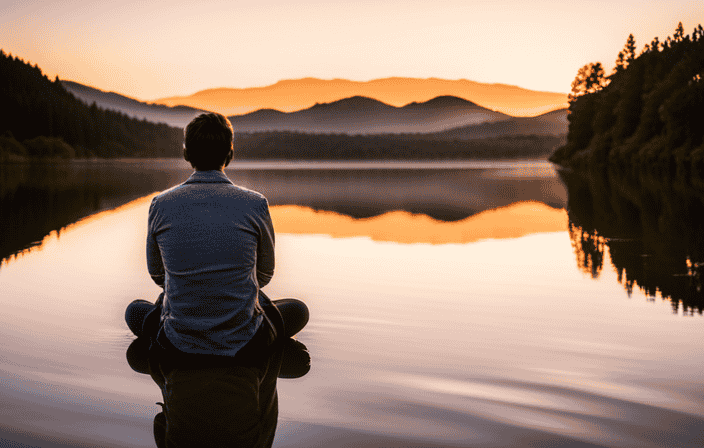
 Spirituality2 months ago
Spirituality2 months agoStarting Your Spiritual Journey: Self-Reflection, Growth, And Connection
-
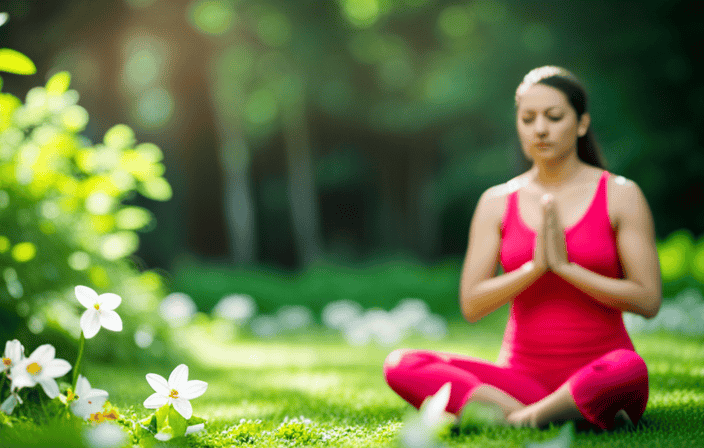
 Spirituality3 months ago
Spirituality3 months agoConnecting Spirituality And Daily Life: Embracing Universal Values
-

 Spirituality3 months ago
Spirituality3 months agoThe Mystical Realms: Exploring Spiritual Dimensions
-

 Meditation3 weeks ago
Meditation3 weeks agoThe Symbolic Significance Of Sand Dollar: Spiritual Meanings And Cultural Connections
